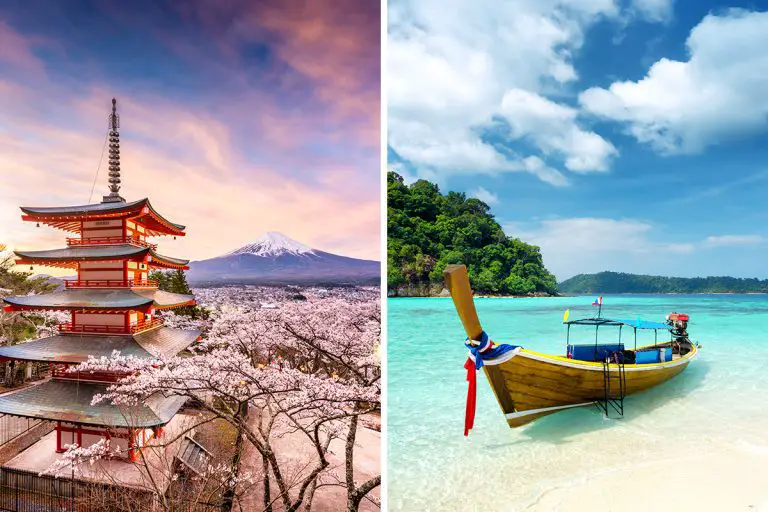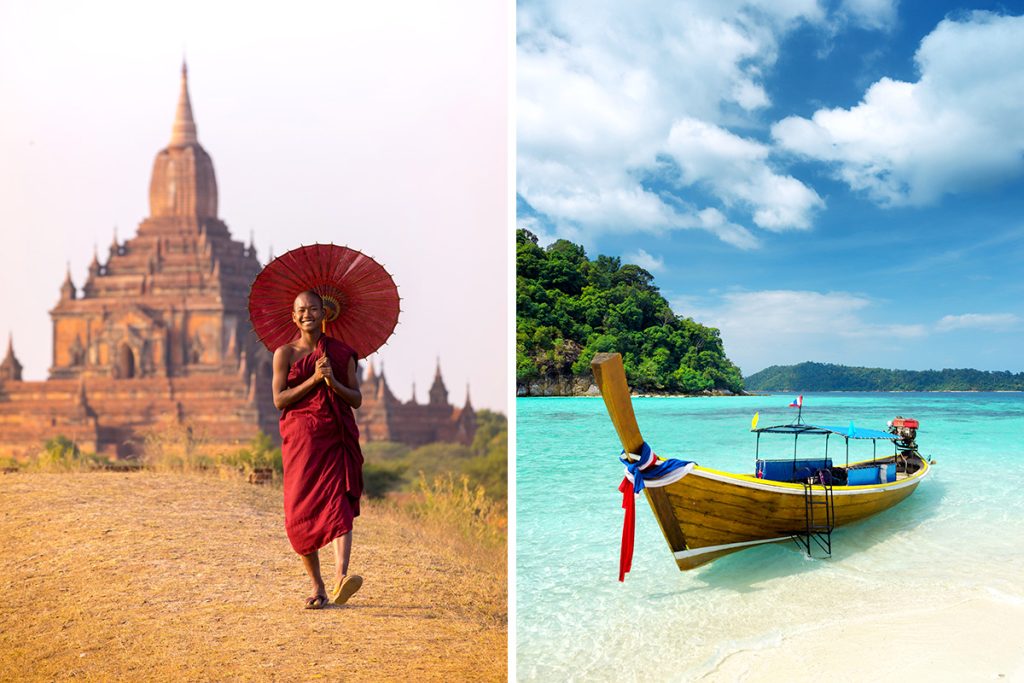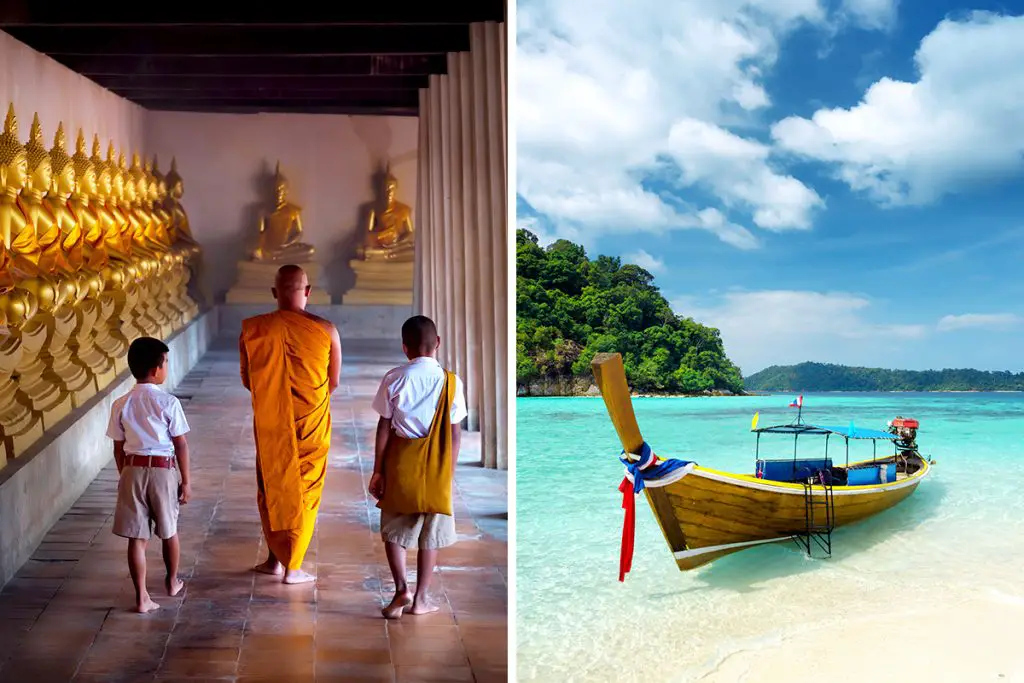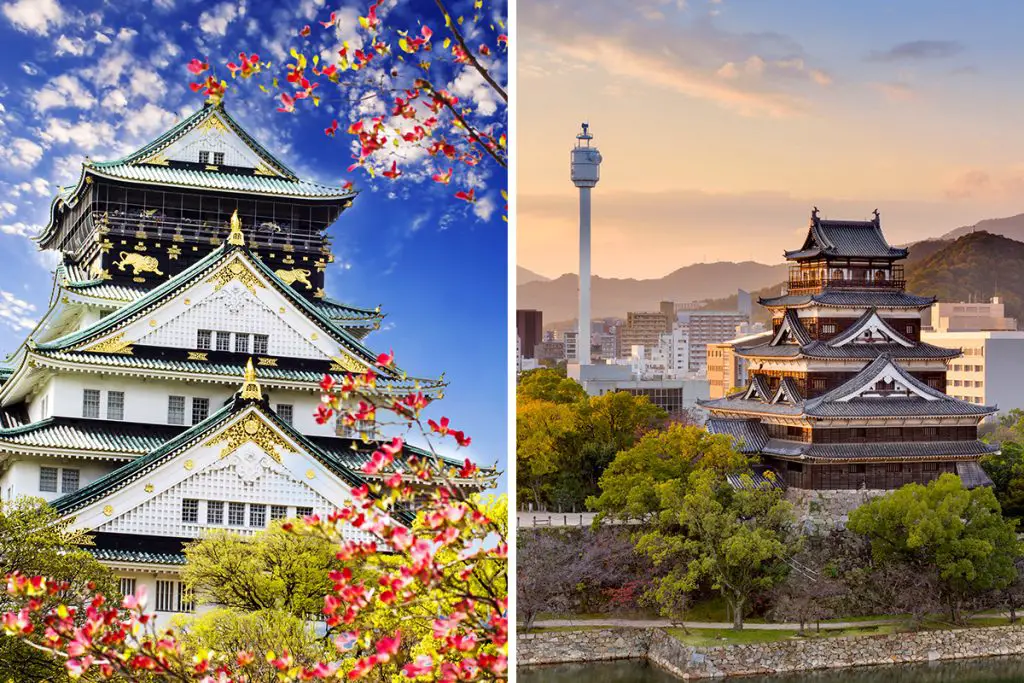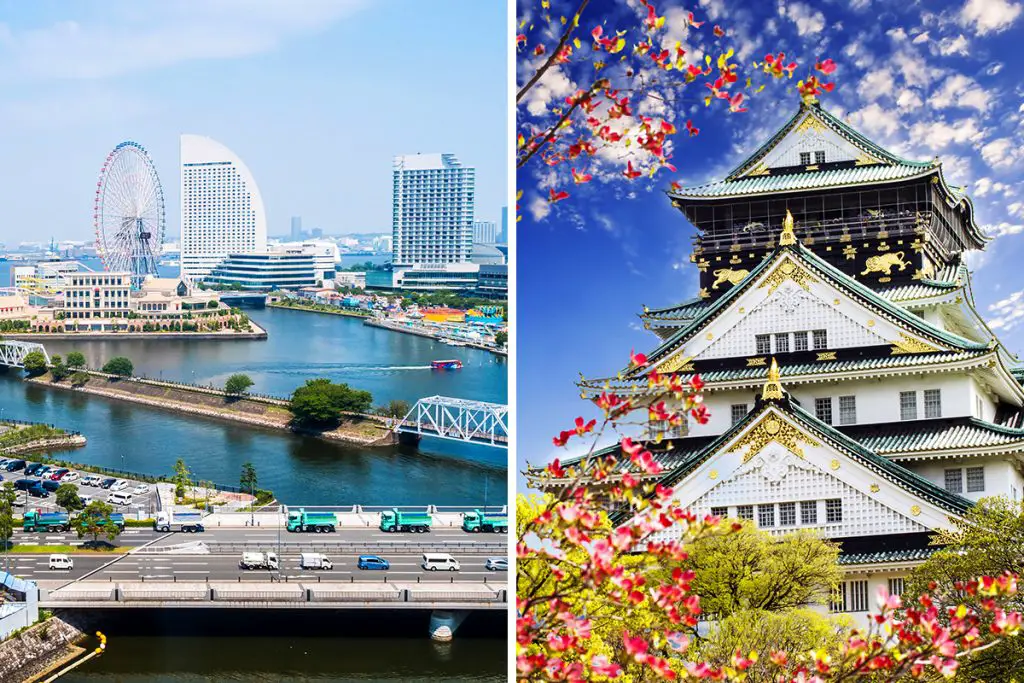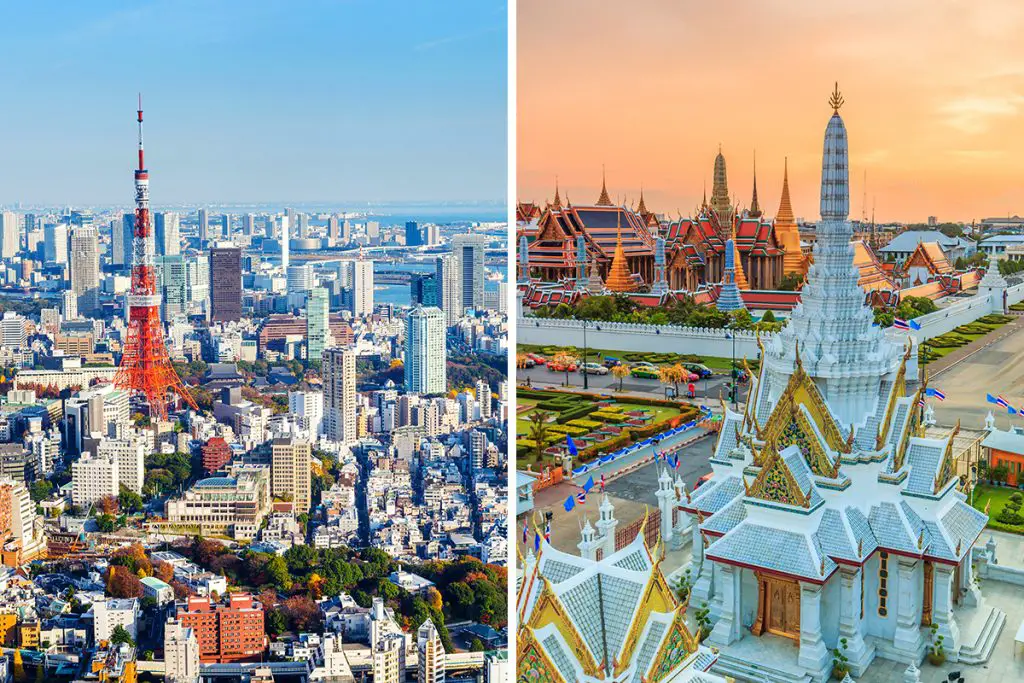You might find yourself torn between these two incredible destinations. Each promises a blend of tradition and modernity, yet delivers it in its own unique way. If you’re in a bind about where to go, fear not! You’re in the right place to get the information you need to make that big decision.
History & Culture
First things first, let’s dig into the history and culture of Japan and Thailand. Both countries have deep-rooted histories that have shaped their present-day cultures. Yet, each offers a remarkably different journey through time and tradition. So, what makes them unique, and how do they compare?
Japan’s history is a tapestry woven with samurai warriors, stunning art, and high levels of craftsmanship. The nation rose from small island communities to a feudal society, and eventually to a technological powerhouse.
Japan beautifully merges the old with the new; ancient shrines stand proudly beside sky-high buildings in cities like Tokyo. You’ll find that respect for tradition is deeply ingrained in every aspect of life.
Thailand, on the other hand, offers a tropical paradise steeped in spirituality. It’s a land where Buddhist principles guide daily life. Thailand has its roots in the ancient kingdom of Siam, known for its warm hospitality and majestic temples. Over time, the country has blended influences from India and China into its own distinct culture. Thai people put a lot of focus on community, family, and spiritual well-being.
While Japan’s culture may emphasize meticulousness and innovation, Thailand’s leans more toward spirituality and community. These differences aren’t better or worse, just different flavors of life that make each destination unique.
You’ll find punctuality and precision in Japan, while in Thailand you’ll experience a more relaxed pace, where the focus is often on living in the moment.
Both countries offer incredible historical landmarks, too. Japan boasts castles, temples, and ancient gardens. Thailand will sweep you off your feet with its own temples, as well as palaces and ancient ruins. So, whether you’re looking to explore samurai history or delve into Buddhist philosophy, both nations offer a rich tapestry of historical experiences.
To sum it up, your choice between Japan and Thailand boils down to what kind of cultural experience you’re seeking. Japan offers a blend of ancient traditions and cutting-edge modernity, while Thailand delivers a laid-back yet deeply spiritual experience. Whatever you choose, you’ll be diving into a rich world of history and culture that promises to make your trip unforgettable.
Attractions & Activities
Wondering what activities and attractions await you in Japan and Thailand? Each country offers a host of sights and experiences that’ll fill your days with adventure. Here’s a close look at the main attractions and activities that make each country unique. Trust us, you won’t want to miss a thing.
In Japan, a trip to Kyoto is like stepping back in time, where you can visit the historic Gion District and several of the 17 UNESCO World Heritage Sites like Kinkaku-ji, the Golden Pavilion. For outdoor enthusiasts, a hike up Mount Fuji, the country’s highest peak at 3,776.24 meters (12,389.2 feet), is a challenging yet rewarding experience that provides sweeping views of the surrounding landscapes.
If you’re into technology, Akihabara in Tokyo is a haven for electronics and anime culture. And for history buffs, Hiroshima offers a poignant look into the events of World War II, with its Peace Memorial Park and Museum.
Thailand is equally compelling but in different ways. In Bangkok, you can visit the Grand Palace, which has been the official residence of the Kings of Siam since 1782. Nature lovers will find solace in trekking the trails in Chiang Mai, which take you to awe-inspiring viewpoints overlooking lush forests.
If you’re a history enthusiast, don’t miss out on the ancient city of Ayutthaya, which offers ruins and statues dating back to the 14th century. The site is just a short train ride from Bangkok.
Now, if you’re torn between the two, let’s put it this way: Japan offers a mix of historic landmarks, technological wonders, and scenic beauty. You can go from walking amid cherry blossoms in Kyoto to feeling the rush of Shibuya’s busy crossing in Tokyo.
Thailand, on the other hand, provides a mix of natural beauty and historical landmarks. From the bustling streets of Bangkok to the serene trails of Chiang Mai, Thailand offers a bit of everything.
Of course, both countries have outdoor activities as well. While Japan has its iconic Mount Fuji, Thailand’s jungles offer zip-lining and white-water rafting for thrill-seekers. Japan’s gardens like Shinjuku Gyoen are masterpieces of tranquility, while Thailand’s waterfalls, like Erawan Falls, offer nature in its purest form.
In summary, whether you’re leaning toward Japan or Thailand, rest assured that both countries offer a vast array of attractions and activities that can cater to various interests. Japan is great for those looking for a mix of history, technology, and nature, while Thailand offers an impressive range of historical landmarks and natural beauty.
Beaches
Beaches, anyone? Both Japan and Thailand have coastal landscapes that can leave you awestruck, but they offer very different experiences. So, if sun, sand, and sea are high on your agenda, let’s dive into what each destination has in store for you.
Japan’s coastline stretches about 29,751 kilometers (18,486 miles), giving you numerous options for beach getaways. One notable beach is Katsurahama in Kochi, which is more for scenic beauty rather than swimming.
Another one is the Shirahama Beach in Wakayama, which is popular for its hot springs and white sand. Both beaches are unique in their own right and offer more than just a place to tan.
Thailand’s coast stretches approximately 3,219 kilometers (2,000 miles). Phang Nga Bay, near Phuket, offers unique limestone cliffs that rise dramatically from the emerald-green waters. Railay Beach in Krabi is famous among rock climbers for its stunning limestone formations. Both are perfect if you’re looking to add some adventure to your beach experience.
Japan’s beaches often offer a cultural experience, with several festivals happening during summer. You might even stumble upon a traditional “Bon Odori” dance if you time your visit right. Thailand’s beaches, however, are more about the vibrant ecosystem underwater. You’ll find an incredible diversity of marine life, making it a diver’s paradise.
While Japan’s beaches are more about scenic beauty and cultural events, Thailand’s beaches are renowned for their crystal-clear waters and opportunities for water sports like scuba diving and snorkeling. If you’re more into the recreational side of beach life, Thailand might have the edge for you.
To sum it all up, Japan and Thailand offer distinct beach experiences that cater to different tastes. Japan offers a cultural and scenic experience with its beaches, while Thailand’s coasts are all about water activities and natural beauty. So, depending on what you’re looking for, your ideal beach destination awaits in either Japan or Thailand.
Eating, Drinking & Nightlife
Let’s get into one of the most exciting parts of any trip—the food, drinks, and the vibe after the sun sets! Both Japan and Thailand have rich culinary landscapes and buzzing nightlife. But how they serve up these delights differs vastly. Here’s how to decide which flavor best matches your taste.
Japan is a culinary heaven, offering everything from sushi and ramen to tempura and Wagyu beef. Whether you’re slurping noodles in a bustling Tokyo market or enjoying a multi-course Kaiseki meal in Kyoto, the attention to detail is impeccable. The Japanese take their food seriously, and the quality speaks for itself.
Thailand doesn’t lag behind when it comes to mouthwatering food. Think Pad Thai, green curry, and mango sticky rice. Thai food is an explosion of flavors—sweet, spicy, sour, and umami—all in one bite. Street food is a big part of the experience, and you’ll find vendors on nearly every corner in cities like Bangkok and Chiang Mai.
Now, let’s talk about drinks. Japan is the land of sake and whiskey. You might even find yourself in a sake brewery learning about the intricate process of brewing rice wine. In contrast, Thailand offers a range of local beers like Singha and Chang, and let’s not forget the infamous Thai buckets, a mix of spirits and mixers often served at beach parties.
As for the nightlife, Tokyo’s Shibuya and Shinjuku districts offer an array of options, from karaoke bars to high-end clubs. In Thailand, nightlife is often beach-oriented, especially in places like Koh Phangan, where the Full Moon Party is a massive draw. Bangkok also offers rooftop bars with panoramic city views.
To sum up, if you’re looking for a sophisticated culinary experience and don’t mind spending a bit more, Japan’s dining scene is hard to beat. Thailand is your go-to for street food and a laid-back vibe. When it comes to drinks, choose between Japan’s refined sake and whiskey culture or Thailand’s more relaxed beer and beach bucket scene. Nightlife in Japan is diverse and can be elegant, while in Thailand it’s usually more casual and outdoorsy.
Shopping
Ready to shop till you drop? Whether you’re looking for high-end fashion or unique souvenirs, Japan and Thailand offer different shopping experiences that are sure to satisfy your retail cravings. Let’s dig into what each has to offer.
In Japan, Tokyo’s Ginza district is renowned for its luxury boutiques like Chanel and Louis Vuitton. Akihabara is the tech and anime hub, offering all sorts of gadgets and collectibles.
If you’re a fan of minimalistic design, stores like Muji and Uniqlo are Japanese staples that offer quality products, from clothing to home goods. For traditional crafts, Kyoto offers handmade textiles, tea sets, and intricate fans.
Thailand, on the other hand, is known for its bustling markets. Chatuchak Market in Bangkok is one of the largest weekend markets in the world, where you can find everything from vintage clothing to home décor.
For a more unique experience, the floating markets in Bangkok offer an array of fresh fruits, local food, and trinkets. In Chiang Mai, the Night Bazaar is a haven for handmade crafts, artworks, and souvenirs.
If you’re into electronics, Japan is likely more up your alley with its cutting-edge technology stores. But if you’re looking for handcrafted items or street fashion, Thailand offers a vast selection often at more affordable prices.
Japan provides a more organized shopping experience, with high-quality items that come with a higher price tag. Thailand offers a more chaotic but exciting shopping atmosphere, where haggling is part of the fun.
In summary, for those looking for luxury brands and high-tech gadgets, Japan is your best bet. If you’re after unique, handmade items and love the thrill of haggling, Thailand’s vibrant markets are calling your name.
Accommodation
Finding the perfect place to lay your head after a day of exploration is crucial. Japan and Thailand offer a wide variety of accommodations, but they are as different as sushi and Pad Thai. So, which one aligns with your style? Let’s find out.
In Japan, the lodging options range from luxurious hotels in Tokyo’s posh districts like Shinjuku and Shibuya to traditional Ryokan inns in Kyoto that offer an authentic experience. These inns often feature tatami-matted rooms, communal baths, and traditional Japanese breakfasts.
On the budget side, Japan has capsule hotels where each guest has a small, enclosed bed area, typically costing between $30 to $50 a night.
Thailand’s accommodation spectrum is just as diverse. You have everything from high-end resorts in places like Phuket to budget-friendly hostels in Bangkok. Guesthouses are common in smaller cities and rural areas, offering a more intimate experience. Thailand is generally more affordable, with decent hotels available for as low as $20 per night.
If you value modern amenities and are willing to spend a bit more, Japan’s hotels and Ryokans offer world-class services and cleanliness. On the other hand, if you’re looking to get the most bang for your buck and don’t mind a more laid-back atmosphere, Thailand has got you covered.
To sum it up, Japan offers a range of accommodations that excel in comfort and cleanliness but can be a bit pricey. Thailand offers diverse, budget-friendly options that provide good value for your money.
Family-Friendliness & Children’s Activities
Family trips are an adventure, and both Japan and Thailand have their unique selling points when it comes to keeping the kids entertained and the parents at ease. But which destination will have your family’s hearts singing? Let’s dig in.
Japan is incredibly family-friendly. Safety is rarely an issue, and public places are generally clean and well-maintained. Tokyo Disneyland and Universal Studios Japan in Osaka are dream destinations for kids. The country also offers various interactive museums and science centers that make learning fun.
Thailand is a paradise for outdoor-loving families. Activities like elephant sanctuaries in Chiang Mai or snorkeling in the islands keep the young ones engaged. Thailand is also more relaxed in its atmosphere, making it less stressful for families who like to play things by ear.
Japanese culture places a strong emphasis on respect and manners, and this is reflected in how well children are treated. In Thailand, the local people adore children, and you’ll often find them going out of their way to make your little ones smile.
In Japan, facilities like diaper changing rooms and children’s restrooms are more readily available in most public areas. Thailand, while improving, still has some way to go in offering such amenities.
In summary, if you’re looking for a structured, clean, and highly organized family holiday, Japan ticks all the boxes. But if it’s an adventurous, laid-back family experience you’re after, Thailand’s your go-to destination.
Getting There & Getting Around
Getting to your dream destination and moving around once you’re there can significantly impact your travel experience. Japan and Thailand differ not only in their geographic locations but also in their transportation systems.
Japan is typically reached by flying into one of its major international airports like Narita or Haneda in Tokyo. The flight from New York to Tokyo can take around 14 hours and cover approximately 6,740 miles (10,840 km).
Thailand’s primary international gateway is Suvarnabhumi Airport in Bangkok. A flight from New York to Bangkok takes roughly 17 hours and spans about 8,560 miles (13,780 km).
In Japan, the train system is the epitome of efficiency. The Shinkansen, or bullet train, can get you from Tokyo to Osaka in about 2.5 hours, covering a distance of 247 miles (about 398 km). Local trains and subways are equally reliable.
Thailand’s transportation is more varied, offering everything from tuk-tuks to ferries for island-hopping. However, the train system is not as extensive or as timely as Japan’s.
Taxis are readily available in both countries. In Japan, they’re a bit on the pricier side but offer immaculate service. Thailand’s taxis are cheaper but make sure to insist on the meter to avoid overcharges.
So, whether you’re looking for speed and efficiency in Japan or a more relaxed, cost-effective means of travel in Thailand, understanding these differences will help you make the most of your trip.
Weather
Weather plays a big role when you’re deciding between Japan and Thailand for your vacation. So, what’s the forecast for fun in each destination? Let’s find out.
Japan has four distinct seasons, each offering its own charm. The spring months of March to May are famous for cherry blossoms, with temperatures ranging between 50-70°F (10-21°C). Summer in Japan, especially in July and August, can be hot and humid, with temperatures climbing up to 90°F (32°C).
The fall season from September to November is quite pleasant, with temperatures ranging from 60-75°F (15-24°C). Winters are cold, particularly from December to February, with temperatures going down to 32°F (0°C) in places like Tokyo.
Thailand, on the other hand, is generally hot and humid year-round. The dry season lasts from November to February with temperatures around 79-89°F (26-32°C). The hot season runs from March to May, and temperatures can shoot up to 95°F (35°C). The rainy season is from June to October, but the showers usually come in short bursts and are often at night.
In Japan, you can experience a wide variety of climates depending on the time of year you visit. In contrast, Thailand gives you a hot, tropical experience, regardless of when you go.
So, if you prefer a vacation spot where you can experience different seasons, Japan is the way to go. But if you’re a fan of warm, tropical climates, Thailand is your best bet.
Safety
When you’re traveling, nothing is more important than your safety and well-being. So how do Japan and Thailand stack up? Let’s dive in.
Japan is widely known for its low crime rates. Violent crimes are rare, and petty crimes like pickpocketing are not common either. Even in busy areas like Tokyo’s Shibuya district, you can generally feel safe walking around at night.
Thailand also offers a fairly safe environment, but you’ll need to be a bit more cautious. Petty crimes like bag-snatching and scams are more common, especially in tourist-heavy areas like Bangkok and Phuket.
When it comes to natural disasters, Japan is prone to earthquakes and typhoons. Thailand, meanwhile, occasionally faces flooding in certain regions.
To wrap it up, while both countries are generally safe, Japan stands out for its remarkably low crime rate and clean streets, although it comes with its own set of natural risks. Thailand requires a bit more vigilance on your part, especially in crowded tourist areas.
Cost
Budget is always a big factor in travel plans. How do Japan and Thailand compare when it comes to your wallet? Let’s break it down.
Japan is on the more expensive side. A meal at a mid-range restaurant can cost you around 2,000 JPY ($18). Accommodations like a three-star hotel would typically cost about $170 per night. A train ticket for a short ride on the Tokyo Metro will be about 200 JPY ($1.80).
Thailand offers a much cheaper alternative. A good meal at a restaurant would usually cost around 200 THB ($6). Accommodations like a decent hotel room can be as low as $130 per night. A short taxi ride would generally cost you around 100 THB ($3).
So, if you’re on a tight budget but still want a memorable vacation, Thailand is your go-to destination. Japan, while pricier, offers top-notch services and amenities that justify the extra cost.
Which Is Better – Japan or Thailand?
So you’ve been contemplating a memorable trip, and the burning question remains: Should you pick Japan or Thailand? Each destination presents a unique array of experiences, from history and culture to cost and safety. Let’s sum it all up so you can make your decision.
First off, history and culture are abundant in both nations, but they offer different vibes. Japan gives you a mix of old and new, with ancient traditions and cutting-edge technology living side by side.
Thailand, on the other hand, is steeped in Buddhist traditions and offers a relaxed, tropical atmosphere. If you’re a culture buff who loves diverse experiences, Japan would be a fantastic choice. For those looking for a more laid-back cultural journey, Thailand is perfect.
When it comes to attractions and activities, Japan shines with its diverse offerings from historic temples to futuristic robot shows. Thailand is your go-to if you prefer outdoor activities like scuba diving and elephant trekking. However, neither disappoints in delivering memorable experiences.
Beach lovers will find their paradise in Thailand. The country offers endless beaches with golden sands and crystal-clear waters, while Japan’s beaches are fewer and not as globally acclaimed. So, if soaking up the sun is on your agenda, Thailand is hard to beat.
On the eating, drinking, and nightlife front, Thailand brings you a vibrant street food culture and a buzzing nightlife, especially in places like Bangkok. Japan offers a more refined culinary experience and a unique nightlife often centered around districts like Shinjuku in Tokyo. Your choice here really depends on your personal taste—literally!
In terms of shopping, Japan offers high-tech gadgets and traditional crafts, while Thailand is a haven for affordable souvenirs and clothing. For accommodation, both countries offer a wide range of options to fit different budgets, but Thailand is generally cheaper.
When it comes to family-friendliness, both countries have a lot to offer, but Japan’s efficient public transport makes getting around with kids easier. Speaking of transport, getting to either country is fairly straightforward, with both served by major airlines.
So, when to choose which? If you’re after a vacation that offers diversity in experiences, is rich in culture, and budget isn’t a constraint, Japan should be on the top of your list. However, if you’re looking for a more budget-friendly, laid-back trip where you can enjoy nature and the beach, Thailand is your go-to. In the end, both countries are fantastic; it just comes down to what kind of vacation experience you’re looking for.

